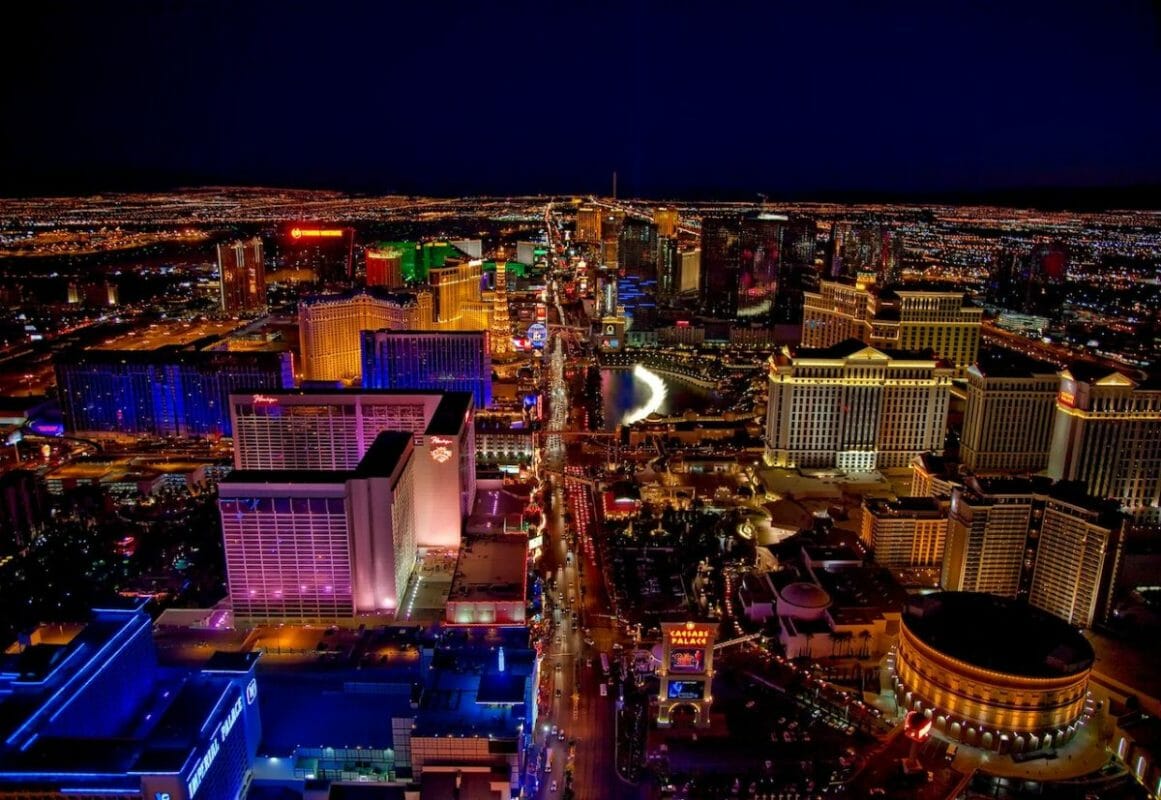Las Vegas Boulevard, commonly known as the Strip, is a dazzling stretch of entertainment, casinos, and attractions, drawing millions each year. As visitors traverse this iconic road, they’re met with a blend of excitement and potential risks that underline the importance of pedestrian safety amidst the city’s allure.
Walking the Strip is a sensory journey. Bright neon lights, sprawling casino complexes, live shows, and a medley of international cuisines beckon. Architecturally, the boulevard boasts crosswalks, pedestrian bridges, and expansive sidewalks, all intended to facilitate the continuous flow of foot traffic.
However, the Strip’s vibrancy brings challenges. The sheer volume of visitors, combined with street performers and towering digital billboards, can be distracting. Furthermore, Las Vegas’s reputation as a city that never sleeps means many indulge in alcohol, potentially impairing judgment and reaction times.
Legal Recourse and Rights
Should an unfortunate incident occur, understanding one’s rights is crucial. Pedestrians involved in accidents have protections under Nevada law. Ensuring that these rights are upheld, especially when navigating the complexities of insurance claims or potential legal action, underscores the significance of a knowledgeable Las Vegas personal injury attorney law firm.
Such firms are adept at guiding victims through legal intricacies, advocating for their rights, and ensuring they receive due compensation.
Pedestrian Accidents Statistics and Impacts
While Las Vegas continually works to improve pedestrian safety, accidents are, unfortunately, not uncommon. These incidents not only lead to physical injuries but also emotional trauma, impacting victims long after the event. The broader societal impact, from increased medical costs to loss of productivity, emphasizes the importance of proactive safety measures.
According to the Las Vegas Review-Journal, Nevada saw 382 traffic fatalities in 2021, marking the deadliest year on roadways since 2006. The numbers represent an 18 percent year-over-year increase statewide. In Clark County, the increase was 22 percent. In 2020, there were 324 fatalities among drivers, passengers, bicyclists and pedestrians. Both the county and state saw an increase in deaths among pedestrians and motorcycle riders, while deaths among bicyclists fell.
Statistically, pedestrian accidents in Las Vegas make up a concerning percentage of total road accidents. These numbers are particularly unsettling given the Strip’s compact nature, where foot traffic is often more prevalent than vehicular movement. Factors such as poor lighting in certain stretches, combined with the intoxication of drivers or pedestrians, further compound the risks.
The immediate aftermath of such an accident typically involves physical injuries. These can range from minor scrapes and bruises to severe trauma, fractures, or even life-altering conditions. The recovery process can be long and grueling, necessitating medical interventions, surgeries, and prolonged therapy.
However, the scars aren’t just physical. Victims of pedestrian accidents often grapple with emotional and psychological trauma. The memories of the incident can lead to conditions like post-traumatic stress disorder (PTSD), anxiety, or depression. The emotional healing process often outlasts the physical recovery, requiring counseling and continuous support.
Beyond the individual, these accidents have broader societal repercussions. The economic burden is substantial, with increased medical costs, rehabilitation expenses, and potential legal fees. There’s also the loss of productivity to consider, as victims might be rendered unable to work for extended periods, or in severe cases, permanently. This loss extends to their families and employers, affecting the community at large.
Given these multifaceted impacts, the emphasis on proactive safety measures becomes even more paramount. City planners, law enforcement, and community advocates must work cohesively to bring about meaningful change, ensuring Las Vegas remains a destination of joy, not sorrow.
Infrastructure and City Efforts
Las Vegas, renowned globally for its entertainment and hospitality sectors, is acutely aware of the responsibility it carries towards its visitors. Ensuring pedestrian safety on its bustling streets, particularly the Strip, has emerged as a top priority. The city’s administration, in collaboration with urban planners and safety advocates, has been making concerted efforts to address and mitigate the challenges that pedestrians face.
One of the pivotal steps taken has been the enhancement of lighting along key stretches of the city. Well-lit streets not only deter potential criminal activity but also significantly reduce the risks of accidents, especially during the night when foot traffic remains high but visibility diminishes. By installing brighter, energy-efficient LED lights and ensuring regular maintenance, dark spots have been minimized, offering clearer paths for pedestrians.
Furthermore, the city has embarked on a mission to revamp its signage. Realizing that a multitude of its visitors are tourists unfamiliar with the local layout, clearer and more intuitive signs have been installed. Whether it’s directing foot traffic, marking pedestrian crossings, or warning of potential hazards, these signs play a crucial role in guiding and safeguarding those on foot. Additionally, interactive kiosks and digital maps have started making appearances, offering real-time guidance and safety tips.
Public awareness campaigns have also gained momentum. Through local media, community workshops, and collaborations with businesses on the Strip, the city has been educating the public about safe pedestrian practices. From teaching the importance of using designated crosswalks to the risks of jaywalking, these campaigns aim to instill a sense of responsibility in both residents and visitors. Moreover, with the introduction of more pedestrian-friendly zones and the expansion of sidewalks, Las Vegas is actively reshaping its infrastructure to prioritize pedestrian safety above all.
Tips for Ensuring Safety While Walking the Boulevard
For those venturing out on the Strip:
- Stay alert, minimizing distractions like excessive phone use.
- Utilize designated crosswalks and pedestrian bridges.
- If planning to indulge in Las Vegas’s nightlife, do so responsibly, being especially cautious when crossing streets.
The Las Vegas Strip is a testament to human creativity, entertainment, and architectural marvels. As visitors immerse themselves in its wonders, safety should remain paramount. A blend of individual awareness, city initiatives, and the support of legal professionals ensures that memories made on the Strip are for all the right reasons.
